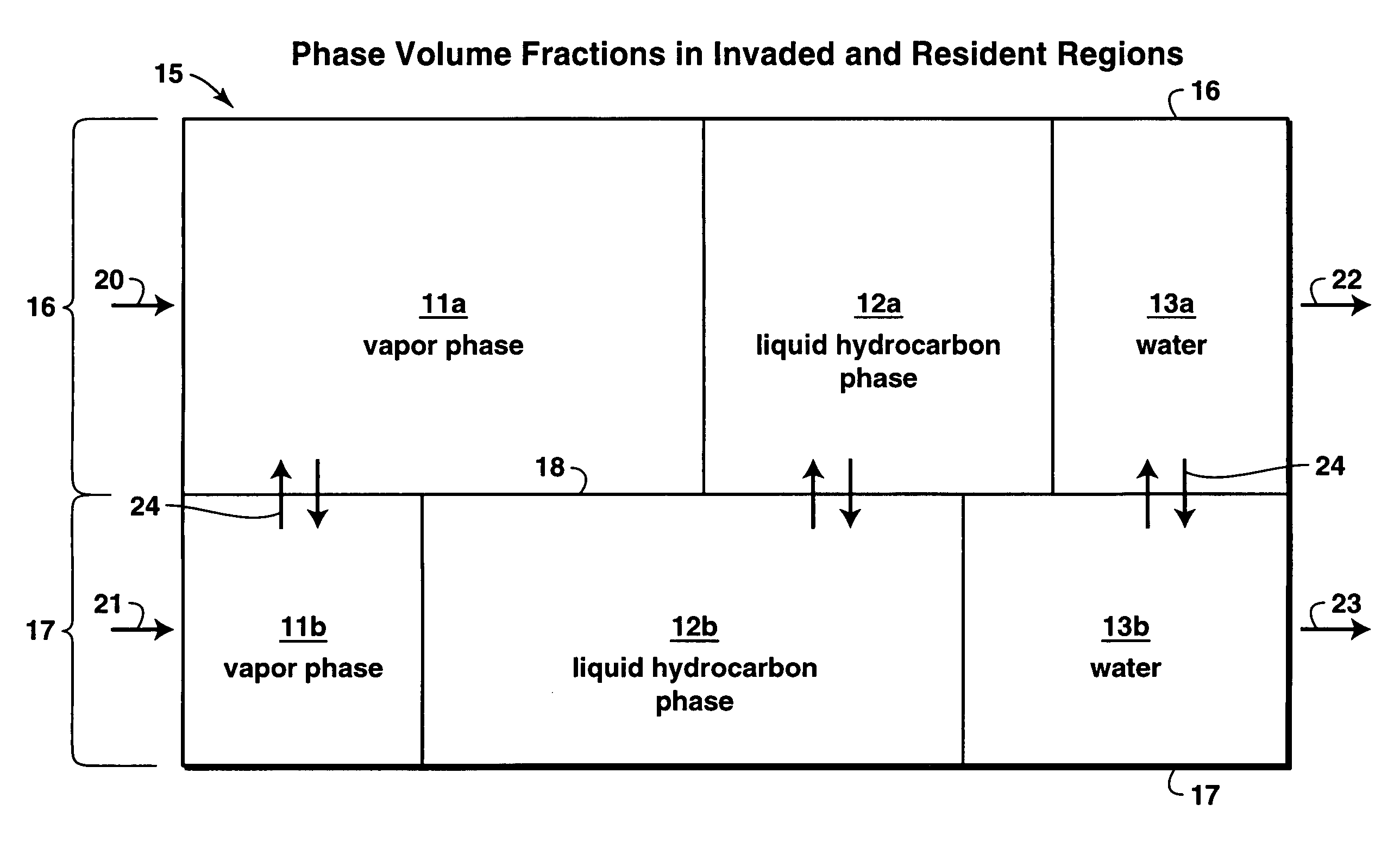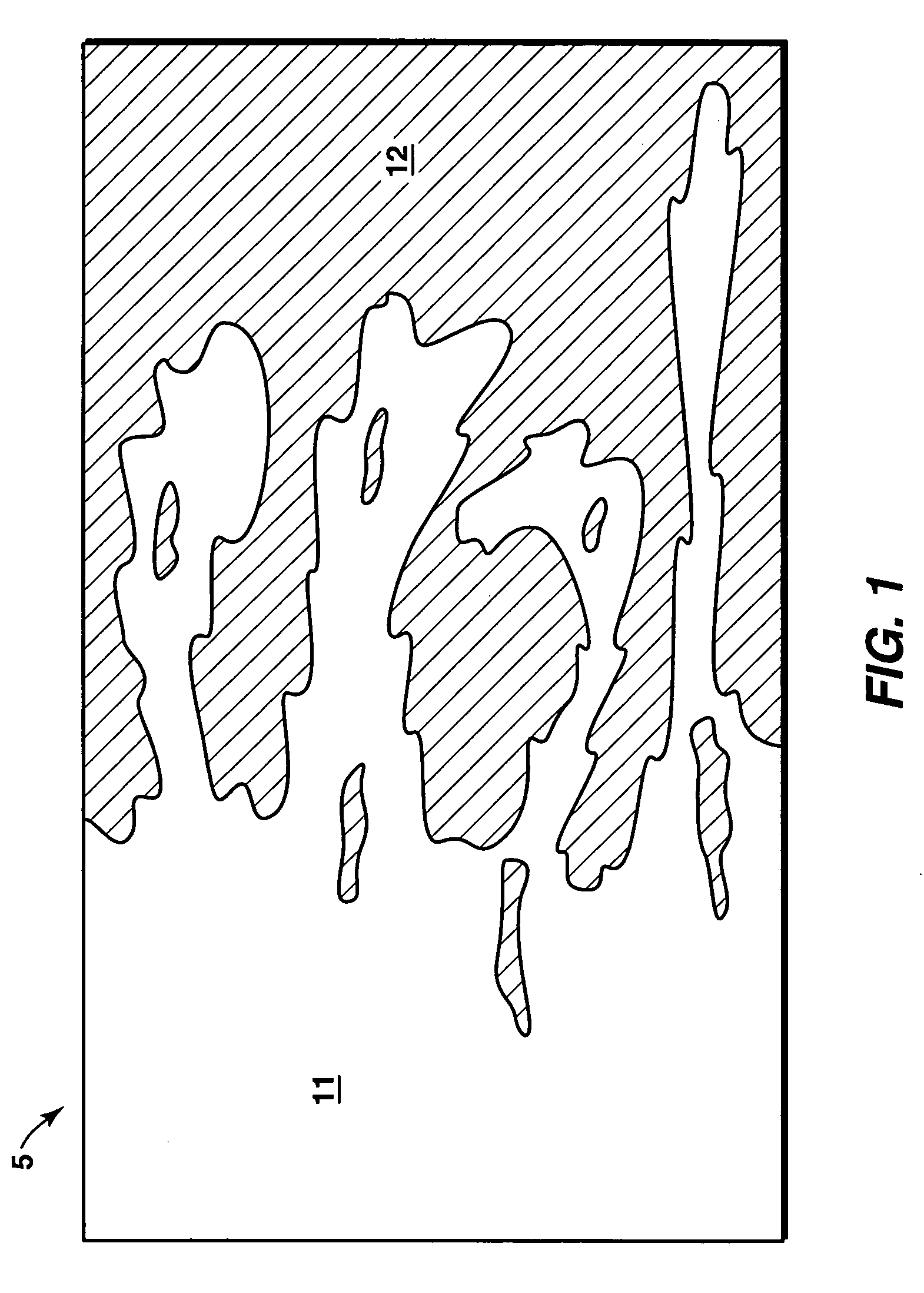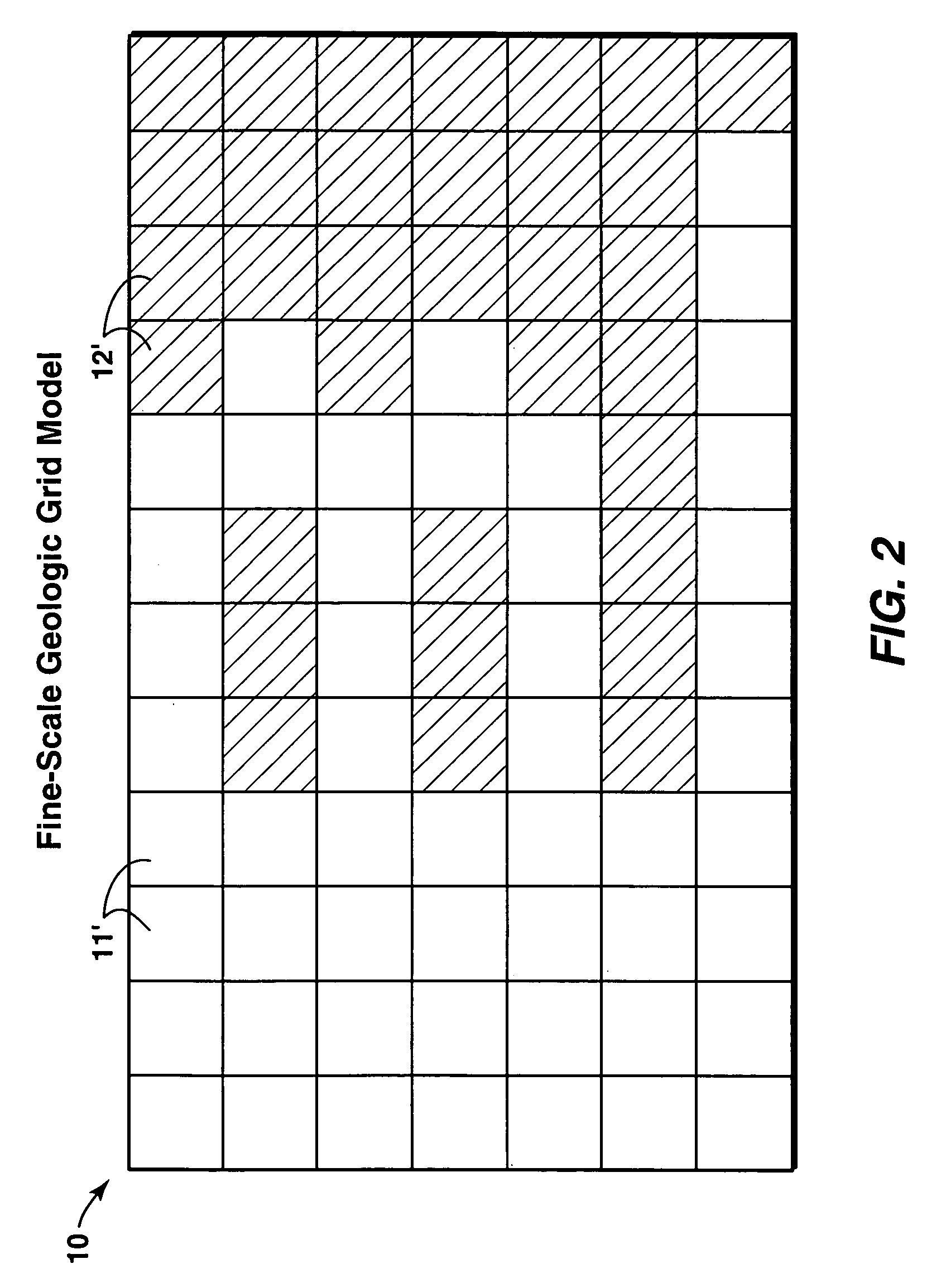Method and system for simulating a hydrocarbon-bearing formation
a hydrocarbon-bearing and formation technology, applied in the field of simulation of hydrocarbon-bearing formations, can solve the problems of affecting the displacement efficiency of the reservoir, the inability to use fine-scale models to simulate these variations, and the uneven flow of solvent through the reservoir. , to achieve the effect of delayed oil production
- Summary
- Abstract
- Description
- Claims
- Application Information
AI Technical Summary
Problems solved by technology
Method used
Image
Examples
example 1
[0090]The coordination number, z, in the effective medium approximation to the percolation theory denotes the “branchiness” or connectivity of the network. In the context of this invention, z represented finger structure in a gridcell and incorporates the effects of properties such as oil / solvent mobility ratio, reservoir heterogeneity, and rock type. In a general way, z may be analogized to the mixing parameter ω in the Todd-Longstaff mixing model. FIG. 5A shows that increasing z results in reduced oil recovery and FIG. 5B shows that increasing z results in earlier solvent breakthrough. Both the oil recovery and solvent breakthrough curves are sensitive to the value of z. In particular, varying z between two and five reduces oil recovery at 1.5 pore volumes produced from 93% to 52% and reduces the point at which the produced fluid reaches a concentration of 50% solvent from 0.55 to 0.24 pore volumes produced. The MCM phase behavior description in Table 1 was used in this example an...
example 2
[0092]The Damköhler numbers represent the rate of mixing of components between invaded and resident regions. Results shown in FIGS. 6A through D demonstrate that this invention successfully reproduces the correct limiting behaviors. The MCM phase behavior description in Table 1 was used in this example and the Damköhler numbers were assumed to be Da1=0 for the solvent component and Da2=Da3 for the oil components. The simulation of this example started at a waterflood residual oil saturation of 0.35 and used 25 gridcells in the one-dimensional model.
[0093]FIG. 6A shows that when there is no mixing (oil Damköhler numbers=0), the model correctly predicts that there is pure displacement of the oil with no exchange of components between regions. In FIG. 6A, curve 30 is the fraction of light oil component recovered and curve 31 (which has exactly the same shape as curve 30) is the fraction of heavy oil component recovered. The light and heavy component recovery curves 30 and 31 are identi...
example 3
[0096]FIG. 7 shows experimental data presented in a paper by Blackwell, R. J., Rayne, J. R., and Terry, W. M., “Factors Influencing the Efficiency of Miscible Displacement,”Petroleum Transactions, AIME (1959) 216, 1–8 (referred to hereinafter as “Blackwell et al.”) for a first-contact miscible flood at different values of initial oil / solvent viscosity ratio. The experimental data, which appear as points in FIG. 7, were obtained using homogeneous sand packs and fluids of equal density (to minimize gravity segregation). Experiments were conducted at viscosity ratios of 5, 86, 150 and 375. No water was present in the experiments.
[0097]Also plotted in FIG. 7 are lines that correspond to oil recoveries obtained from simulations using the method of this invention in which the initial oil / solvent viscosity ratio was set at the experimental value, and the coordination number was adjusted to obtain the best possible fit with the experimental data. The Damköhler number was estimated to be on ...
PUM
 Login to View More
Login to View More Abstract
Description
Claims
Application Information
 Login to View More
Login to View More - R&D
- Intellectual Property
- Life Sciences
- Materials
- Tech Scout
- Unparalleled Data Quality
- Higher Quality Content
- 60% Fewer Hallucinations
Browse by: Latest US Patents, China's latest patents, Technical Efficacy Thesaurus, Application Domain, Technology Topic, Popular Technical Reports.
© 2025 PatSnap. All rights reserved.Legal|Privacy policy|Modern Slavery Act Transparency Statement|Sitemap|About US| Contact US: help@patsnap.com



